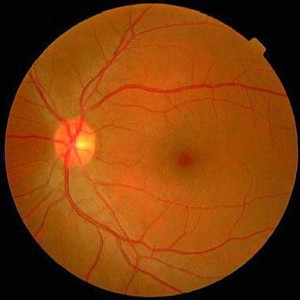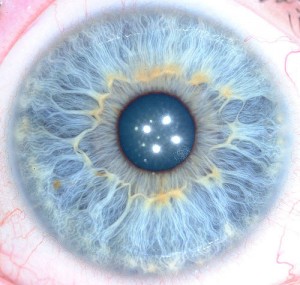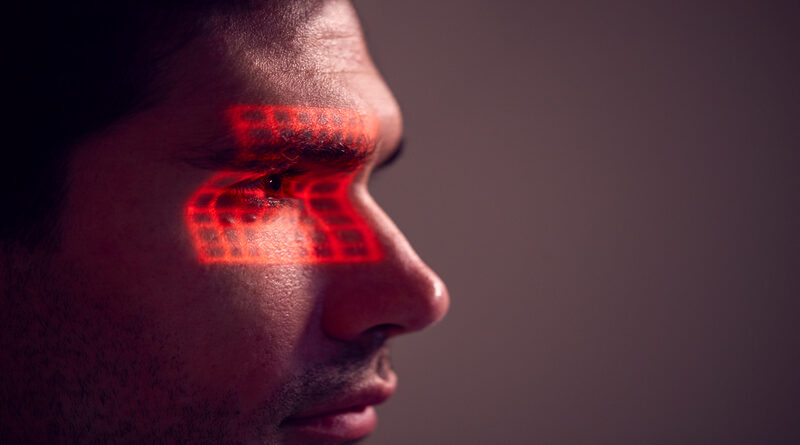Iris Recognition vs. Retina Scanning – What are the Differences?

In biometrics, iris and retinal scanning are known as “ocular-based” identification technologies, meaning they rely on unique physiological characteristics of the eye to identify an individual. Even though they both share part of the eye for identification purposes, these biometric modalities are quite different in how they work. Let’s take a closer look at both and then explain how to write my essay about the similarities and differences in detail:
Retinal Scanning: The human retina is a thin tissue composed of neuralcells that is located in the posterior portion of the eye. Because of the complex structure of the capillaries that supply the retina with blood, each person’s retina is unique. The network of blood vessels in the retina is so complex that even identical twins do not share a similar pattern. Although retinal patterns may be altered in cases of diabetes, glaucoma or retinal degenerative disorders, the retina typically remains unchanged from birth until death. (Source: Wikipedia)

A biometric identifier known as a retinal scan is used to map the unique patterns of a person’s retina. The blood vessels within the retina absorb light more readily than the surrounding tissue and are easily identified with appropriate lighting. A retinal scan is performed by casting an unperceived beam of low-energy infrared light into a person’s eye as they look through the scanner’s eyepiece. This beam of light traces a standardized path on the retina. Because retinal blood vessels are more absorbent of this light than the rest of the eye, the amount of reflection varies during the scan. The pattern of variations is converted to computer code and stored in a database. Retinal scanning also has medical applications. Communicable illnesses such as AIDS, syphilis, malaria, chickenpox well as hereditary diseases like leukemia, lymphoma, and sickle cell anemia impact the eyes. Pregnancy also affects the eyes. Likewise, indications of chronic health conditions such as congestive heart failure, atherosclerosis, and cholesterol issues first appear in the eyes.

Iris Scanning: The iris (plural: irides or irises) is a thin, circular structure in the eye, responsible for controlling the diameter and size of the pupils and thus the amount of light reaching the retina. “Eye color” is the color of the iris, which can be green, blue, or brown. In some cases, it can be hazel (a combination of light brown, green and gold), grey, violet, or even pink. In response to the amount of light entering the eye, muscles attached to the iris expand or contract the aperture at the center of the iris, known as the pupil. The larger the pupil, the more light can enter. Iris recognition is an automated method of biometric identification that uses mathematical pattern-recognition techniques on video images of the irises of an individual’s eyes, whose complex random patterns are unique and can be seen from some distance.
Unlike retina scanning, iris recognition uses camera technology with subtle infrared illumination to acquire images of the detail-rich, intricate structures of the iris. Digital templates encoded from these patterns by mathematical and statistical algorithms allow unambiguous positive identification of an individual. Databases of enrolled templates are searched by matcher engines at speeds measured in the millions of templates per second per (single-core) CPU, and with infinitesimally small False Match rates. Hundreds of millions of persons in countries around the world have been enrolled in iris recognition systems, for convenience purposes such as passport-free automated border-crossings, and some national ID systems based on this technology are being deployed. A key advantage of iris recognition, besides its speed of matching and its extreme resistance to False Matches, is the stability of the iris as an internal, protected, yet externally visible organ of the eye.
Advantage of iris #biometrics is stability of iris as internal, protected, externally visible organ. Click To TweetSimilarities and Differences: While both iris and retina scanning are ocular based biometric technologies, there are distinct similarities and differences that differentiate the two modalities. Iris Recognition uses a camera, which is similar to any digital camera, to capture an image of the Iris. The Iris is the colored ring around the pupil of the eye and is the only internal organ visible from outside the body. This allows for a non-intrusive method of capturing an image since you can simply take a picture of the iris from a distance of 3 to 10 inches away.
Retinal Scanning requires a very close encounter with a scanning device that sends a beam of light deep inside the eye to capture an image of the Retina. Since the Retina is located on the back of the eye, retinal scanning was not widely accepted due to the intrusive process required to capture an image.
Here is an overview of some similarities and differences between iris and retina scanning:
Similarities:
- Low occurrence of false positives
- Extremely low (almost 0%) false negative rates
- Highly reliable because no two people have the same iris or retinal pattern
- Speedy results: Identity of the subject is verified very quickly
- The capillaries in the iris and retina decompose too rapidly to use a amputated eye to gain access
Differences:
- Retinal scan measurement accuracy can be affected by disease; iris fine texture remains remarkably stable
- An iris scan is no different than taking a normal photograph of a person and can be performed at a distance; for retinal scanning the eye must be brought very close to an eyepiece (like looking into a microscope)
- Iris scanning is more widely accepted as a commercial modality than retinal scanning
- Retinal scanning is considered to be invasive, iris is not
Chart: Iris vs. Retinal Scanning: What are the similarities and differences?
@media screen and (max-width: 767px) {.tg {width: auto !important;}.tg col {width: auto !important;}.tg-wrap {overflow-x: auto;-webkit-overflow-scrolling: touch;margin: auto 0px;}}













I have a problem with iris scanning as a security tool. I am parasitised by Horse botfly and my eyes are inhabited by strange little animals. I have a few yellow bots roaming around in both eyes and the whites of my eyes are made up of little white bots. They are excellent at camoflage and there are a quite few blue ones that hide among the irises. I would not recommend any eye biometric as a security ID tool as my irises change about randomly many times a day. If anyone in authority wishes more info i have pix and am willing to be examined at home.
Pingback: W63 TOP NEWS » How secure is Apple iPhone's Touch ID?
Pingback: week 5 essay | Where did I put that blog.com
Pingback: The Tech That Will Kill Passwords Dead | Gizmodo Australia
Pingback: The Tech That Will Kill Passwords Dead | Rob's Personal Aggregator
Pingback: [Discovery] Những công nghệ có khả năng thay thế mật khẩu | sudo man
Pingback: The Tech That Will Kill Passwords Dead | InfoClose
Wouldn’t this be easy to hack if someone took a photo of your eyes.
Thanks for the comment. Iris recognition technology does not save an image of the eye as the biometric template, instead it saves a series of data points that serve as a map of an individual’s unique iris pattern which can be identified by a proprietary algorithm. It is nearly impossible to reverse engineer an iris template to re-recreate an image of the eye and even if this did happen, the image would be useless with a modern iris camera because of sophisticated liveness detection features that render an image of an eye unusable in the absence of live blood flow to the iris itself. Biometrics has evolved as a technology that can offer safeguards against hacking and using someone else’s credentials to assume the identity of another person.
What are the sources for the absolutely irrefutable proof that “Iris scanning has absolutely no negative impact on human health”?
Thank you for the comment. To date, there has been no scientific evidence that iris recognition is harmful to human health. If you have evidence to the contrary, please share with us a study that claims otherwise.
John, you’ve written an excellent article! Should be required reading for all journalists and everyone hired to engineer or market biometric systems.
I think you may have been a little too generous, however in some comparisons. The available data points in the original retina scanning process were 40, compare with the 255+ points in iris imaging. With the mathematics involved, the potential error rates for iris are orders of magnitude superior to retina scanning. Also, the imaging distance for iris is typically 3-8 inches, but can be performed with the iris in motion as distance of 10-15 feet, or more.
This said, you’ve made your point without getting picky on the details.
1bazgam, the objects you mention are not artifacts of the iris per se. The iris image processing and iris code development would not try to deal with these objects.
Appreciate the feedback Dan and thanks for the comment. Thanks also for clarifying some of the more minute comparison details, I would never claim to be scientifically oriented enough to know that level of detail so it’s helpful to clarify.
Appreciate you stopping by to read and leave a comment.
Your description of a retina scan and Wikipedia’s are the same. Please give credit
We have given the proper credit to Wikipedia, thank you.
Very good article.
Pingback: Iris Scanners Can Lock and Unlock Your Doors | Digital Trends
Pingback: Iris Recognition Offers Non-Contact, Hygienic Individual Identification - RightPatient
Pingback: Takeaways from the 2015 NE NAHAM Regional Conference - "Improving the Patient Experience" - RightPatient
Pingback: Google
Pingback: Homepage
how can a normal mobile front camera check if the IRIS is of the same person ?
There seems to be two innacuracies in your table.
By the article, “iris recognition uses camera technology with subtle infrared illumination”, but in the table there is a “No” in the Iris|Safe infrared colum, which suggests that iris scanning uses an unsafe infrared light, or that it doesn’t use infrared illumination at all.
Additionally, from the article: “Iris Recognition uses a camera, which is similar to any digital camera”, yet the table shows that Iris Recognition does not use a camera, but that Retinal Scanning does.
You may wish to check the accuracy of the entire article and table, but these are two discrepancies I noticed right away.
Appreciate the corrections. We had it right in our original post but must have made a mistake when we built the new side by side comparison table.
I think you read the table wrong. The table has both Iris and Retina scanning properties side-by-side.
Iris – Uses safe, low energy-infrared light for scanning- Yes
Iris – Uses a digital camera to capture the image – Yes
Or they have corrected the table. 🙂
Can you give me numbers?
Very good article! Thanks for sharing!
Nice Blog It’s a really informative for all. Outstanding work. You’ve done a great job. I really appreciate your efforts. Thanking you for the share best information ever.
Despite their similarities, retinal and iris scans serve different objectives and cannot be compared. Retinal scans are mostly utilized in the medical field, whereas iris scans are employed in government and private organizations for verification and access control.